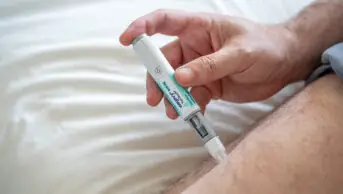
istockphoto.com
In 2010, results from the ACCORD (Action to Control Cardiovascular Risk in Diabetes) trial[1]
suggested a gender disparity in the effectiveness of fenofibrate treatment in type 2 diabetes, with a subgroup analysis signalling possible harm in women.
This is challenged by latest results from the FIELD (Fenofibrate Intervention and Event Lowering in Diabetes) study, reported in Diabetologia (online, 18 August 2014)[2]
. A pre-specified analysis found that cardiovascular event reductions with fenofibrate are consistently similar in women and men and that fenofibrate improves the lipoprotein profile more in women than men.
“These data provide reassurance about fenofibrate efficacy in women and men,” write the FIELD researchers, led by Anthony Keech, from the University of Sydney, Australia. “Both sexes with type 2 diabetes should be considered for fenofibrate therapy for cardioprotection.”
References
[1] The ACCORD study group. Effects of Combination Lipid Therapy in Type 2 Diabetes Mellitus. The New England Journal of Medicine 2010;362:1563–1574.
[2] D’Emden M et al. Favourable effects of fenofibrate on lipids and cardiovascular disease in women with type 2 diabetes: results from the Fenofibrate Intervention and Event Lowering in Diabetes (FIELD) study. Diabetologia . Available from: doi:10.1007/s00125-014-3344-3.


